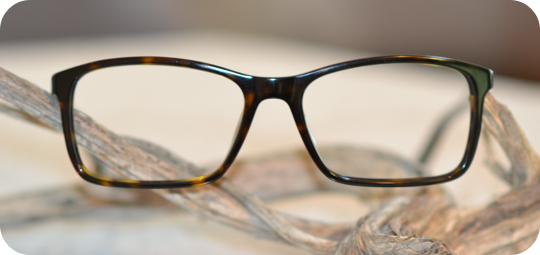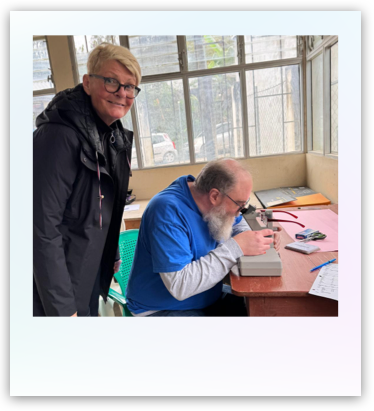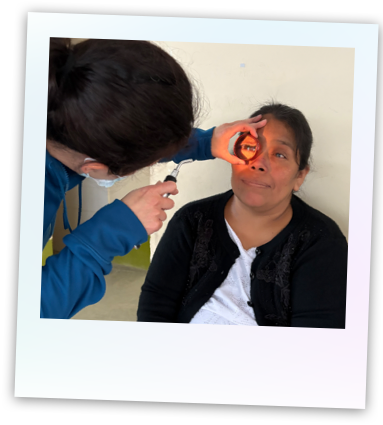It’s easy to brush off dry, itchy eyes as just a passing irritation. Maybe it’s the dry Alberta weather, a long day at the computer, or just something that goes away after a good night’s sleep. But for many people, these symptoms don’t just fade, they linger, worsen, and begin to interfere with everyday life.
Dry eyes rarely cause damage to your vision, but if left untreated, they can lead to complications that affect long-term vision. The good news is dry eye is treatable, especially when caught early.
What is Dry Eye Syndrome?
Dry eye syndrome happens when your eyes don’t produce enough tears or when those tears aren’t of great quality. Since tears are essential for keeping the eyes lubricated and healthy, this imbalance leads to discomfort and, in more severe cases, vision complications.
Common Symptoms of Dry Eye Syndrome
Here are a few of the potential symptoms you might experience from dry eye:
- A persistent dry, gritty, or scratchy feeling
- A burning sensation in the eyes
- Redness or irritation
- Increased sensitivity to light
- Blurry or fluctuating vision
Dry eye is common and often mild, but many people don’t realize how much of a toll it can take on their daily lives. In fact, if left unmanaged, dry eye can even lead to more severe issues.
What Causes Dry Eye?
There’s no single culprit when it comes to dry eye. Here are some of the most common causes:
- Age: As we age, tear production naturally declines. This makes dry eye more likely in people over 50.
- Screen time: Does this sound familiar? You stare at a screen for hours and forget to blink. Reduced blinking leads to less moisture on the eye’s surface, which can leave you with that characteristic dryness.
- Hormonal changes: Women going through pregnancy, menopause, or other hormonal shifts often experience dry eye due to changes in tear production.
- Environment: Windy, smoky, or dry conditions can aggravate dry eye symptoms. Even indoor heating during winters can leave your eyes parched!
- Medications: Certain medications, like antihistamines or antidepressants, can reduce tear production.
- Underlying health conditions: Conditions like rheumatoid arthritis or Sjögren’s syndrome are often linked to dry eye.
Can Dry Eye Cause Long-Term Damage?
While dry eye syndrome might seem like a minor annoyance, failing to treat it properly can lead to complications:
- Corneal Damage: Without enough moisture, the cornea (the clear, outer layer of your eye) can become damaged. Chronic dryness can lead to corneal scarring or ulcers, which could affect your vision.
- Chronic Irritation: Eye redness and inflammation can become persistent, creating a cycle of discomfort.
- Difficulty Wearing Contact Lenses: Many people with dry eyes find wearing contact lenses unbearable due to insufficient lubrication.
- Vision Impairment: Blurred vision caused by dry eye can worsen if unmanaged.
Could Dry Eye Lead to Blindness?
While dry eye itself doesn’t typically cause damage to your vision, it may cause complications (like corneal damage) that can impact vision if left untreated. That’s why it’s important to address dry eye before it escalates.

What Are the Warning Signs?
Dry eye syndrome often sneaks up on you with mild symptoms. To catch it early, ask yourself these questions:
- Do my eyes feel dry, scratchy, or gritty?
- Is my vision blurry after staring at a screen for too long?
- Are my eyes red or irritated more often than not?
- Does the dry feeling get worse in cooler months or indoors when the heating is on?
If you answered “yes” to any of these, it might be time to consult an optometrist about managing your symptoms.
How Can You Manage Dry Eye?
Dry eye is treatable. Here are some common ways to manage and relieve symptoms:
Over-the-Counter Relief
Depending on the cause and symptoms of your dry eye, your eye doctor may recommend any of the following options:
- Lubricating eye drops can provide instant relief. Look for preservative-free options if you’ll be applying them frequently.
- Eyelid wipes can help clean the eyelid margins and reduce inflammation.
- Sprays and cleansers are gentle options for maintaining eyelid hygiene and soothing irritation
- Warm compress masks help unclog blocked oil glands, improving tear quality and reducing symptoms of dry eye and blepharitis.
Lifestyle Adjustments
Making minor lifestyle adjustments can help improve your dry eye symptoms. We recommend:
- Use a humidifier to combat dry indoor air, especially during winter.
- Follow the 20-20-20 rule when using screens: every 20 minutes, look at something 20 feet away for 20 seconds.
- Wear wraparound sunglasses to reduce exposure to wind and dust.
Prescription Treatments
Prescription eye drops or gels may be recommended when over-the-counter options are providing relief. These prescription options help to address inflammation and encourage tear production.
Scleral Lenses
These are specific contact lenses that rest on the sclera of your eye to help retain moisture and promote clearer vision.
Don’t Wait to Address Your Dry Eye Symptoms
Dry eye might not seem like a big deal, but untreated symptoms can quickly snowball into more significant problems for both your eyes and quality of life. Remember, regular eye exams are important for maintaining healthy, happy eyes!
If you’re struggling with dry eye or want to learn more about your treatment options, contact us at Airdrie Family Eye Doctors today.

























